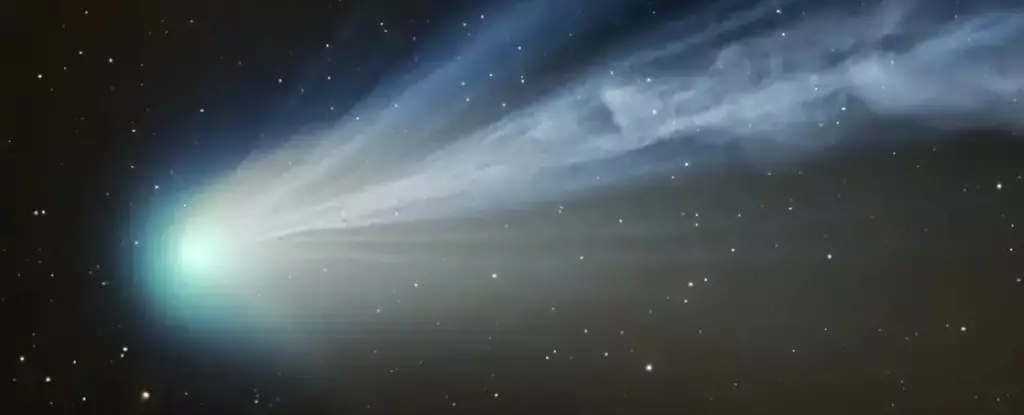A rare astronomical occurrence is set to captivate skywatchers on April 8. While a total solar eclipse will darken skies across a significant part of the US, there will also be another celestial event to look out for. Comet 12P/Pons-Brooks, known as the “Mother of Dragons” or “Devil comet,” will be making its closest approach to the sun in 71 years. This unusually large comet, estimated to be as big as Mount Everest, gets its nickname from the horn-shaped outbursts in its coma, which is a cloud of gas, dust, and ice particles surrounding its solid nucleus.
During the total solar eclipse when the moon covers the sun completely, the skies will darken, providing a chance to potentially spot the Devil comet with the naked eye. Observers can also use binoculars or a telescope to get a clearer view. It is important to note that looking directly at the sun during a solar eclipse is unsafe without proper eye protection. However, during the brief window of totality, when the skies darken significantly, it may be possible to catch a glimpse of the comet if conditions are clear.
To locate the Devil comet during the eclipse, first, look for the planet Jupiter near the eclipsed sun. Jupiter will appear as a bright point of light slightly to the upper left. Once Jupiter is spotted, direct your gaze slightly up and to the right to find the comet, which will be situated between Jupiter and the sun, closer to the planet. While close-up photos reveal a green streak due to the high levels of dicarbon emitting green light, the comet may appear as a small gray smudge during totality.
On April 8, Comet 12P/Pons-Brooks is still two weeks away from its closest approach to the sun when it would be at its brightest. With an estimated apparent magnitude of 4.9, it will be just visible to the human eye. However, predicting comet visibility is challenging as it depends on sunlight interacting with the comet’s coma, which changes in response to its distance from the sun. While some comets have been disappointing in brightness upon reaching Earth, others have exceeded expectations.
Comet 12P/Pons-Brooks offers the potential for a spectacular display due to its cryovolcanic nature, leading to frequent eruptions that enhance its brightness. An eruption during the total solar eclipse would be a remarkable event if it occurs, increasing the visibility of the comet. If skywatchers miss the opportunity to see the comet on April 8, they can try again in the days leading up to April 21 when it will be closest to the sun and brightest, with its path moving closer to Jupiter and eventually passing the planet.
It’s crucial for astronomy enthusiasts to seize the moment during the total solar eclipse to observe the unique beauty of Comet 12P/Pons-Brooks and marvel at the wonders of the universe. The unpredictable nature of celestial events adds to the excitement and mystery, reminding us of the vastness and complexity of the cosmos that surrounds us.



Leave a Reply